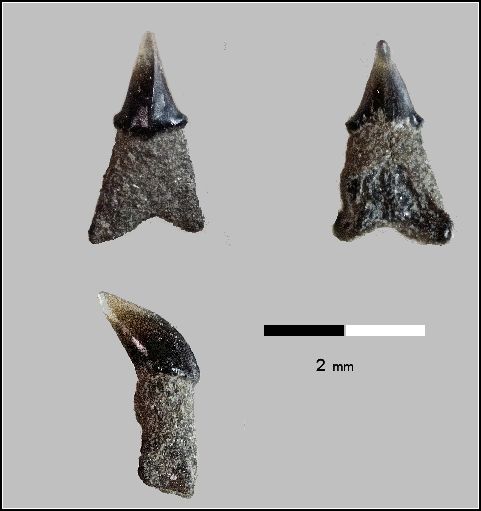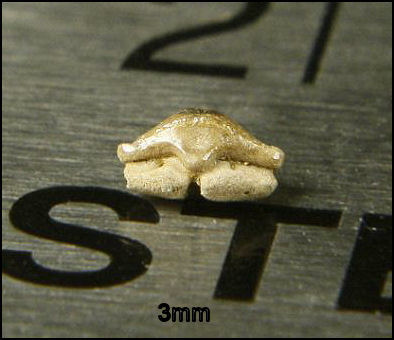|
EXTINCT SAWFISH Case and Cappetta¹ report two species of Ptychotrygon as being found in New Jersey, P. vermiculata and P. cuspidata. These teeth are small, averaging between 2 – 5 mm in width and rather distinct. The crowns are laterally expanded with a transverse crest or cutting edge and a strong labial visor. The roots have a strong nutrient grove with a central foramen. There is a lateral foramen on the lingual face of each lobe. When viewed from the bottom, the roots are triangular in shape. The difference between the two species is most apparent in the crown. P. cuspidata has a higher crown and lacks the extra transverse ridges of P. vermiculata. P. cuspidata has a more ornate crown that is best described as a series of bumps and wrinkles. Originally no rostral spines had been attributed to Ptychotrygon, this has changed in the past several years. (see Plate_2).
The teeth of the extinct sawfish are small, averaging between
Plate 2
The roots of Ptychotrygon have a lateral a
lateral foramen on the lingual face
The triangular root lobe and
strong nutrient grove.
Ptychotrygon cuspidata -
occlusal view
A random sample under a microscope. Author’s note: I’ve examined a significant number of specimens from New Jersey and found that while a number of teeth where easy to attribute to either P. vermiculata or P. cuspidata the vast majority seemed to fall into a no mans land between the two species. I could not assign these teeth to either species with any degree of certainty.
|
||||








